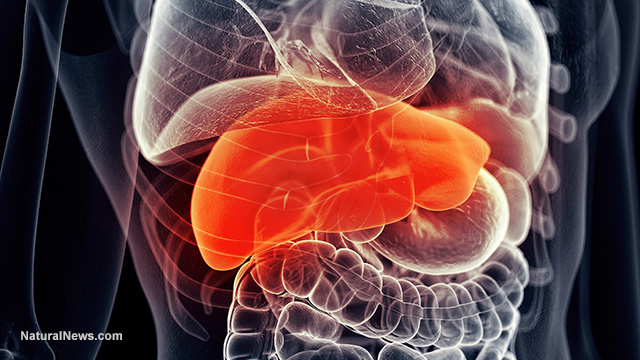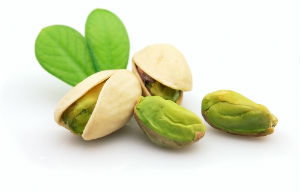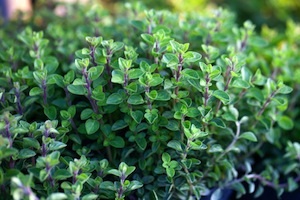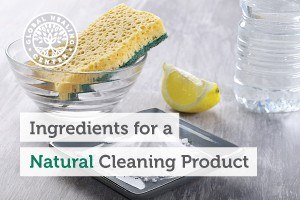Early signs of liver damage that everyone should know
(DrEddyClinic News) One of the most important organs in the body is the liver, and when it's working as it should, it cleans the blood of toxins http://www.toxins.news/, aids in the digestion of food and helps fight off infection. In addition, the liver has the ability to regenerate when it has been damaged, as in trauma, replacing old tissue with new.

As reported http://www.medicaldaily.com/6-early-signs-liver-damage-symptoms-know-404402 by Medical Daily, the American Liver Foundation notes that anything which prevents your liver from doing its assigned jobs, or from repairing itself after injury, "may put your life in danger." That can be anything from inflammation and scarring, to cancer or simply taking too many over-the-counter medications like Tylenol http://www.dreddyclinic.com/forum/viewtopic.php?f=37&t=35462.
Despite the fact that the liver is inside the body, a poorly-functioning organ produces some outwardly visible signs that should always be heeded.
Turning yellow:
When your liver isn't working properly, your skin and the whites of your eyes can become discolored, turning a milky yellow due to the accumulation of a yellowish substance called bilirubin, the U.S. National Library of Medicine notes https://www.ncbi.nlm.nih.gov/pubmedhealth/PMHT0022140/. The condition is called jaundice, and it also results in darkened urine and your stools becoming lighter than normal.
The UK's National Health Service reports further http://www.nhs.uk/conditions/Jaundice/Pages/Introduction.aspx that when the liver is damaged and jaundice appears, it is due to the organ's inability to process bilirubin. Common causes of this kind of extensive liver damage include drinking alcohol to excess on a chronic basis, the abuse of the drug Ecstasy, cancer, hepatitis, various infections and other exposure to toxic substances.
Excretions changing color:
As stated above, the color of urine will darken, while stool color gets lighter.
Itching:
According to the Mayo Clinic http://www.mayoclinic.org/diseases-conditions/itchy-skin/symptoms-causes/dxc-20262871, one of the signs of early liver damage is systemic itching. Your itching may be limited to a certain region, such as your arms or legs, or it may be occurring all over your body. The itching can occur without any other noticeable changes on the skin, but it could also be associated with redness, bumps, spots, blisters, dry and cracked skin, or a leathery, scaly texture to the skin.
At times, the itching can last for a long while, while becoming intense. As you rub or scratch the area, it becomes even more irritated and itchy. And while breaking the itch-scratch cycle can be difficult, if you continue, it's more likely you'll damage your skin or get an infection.
Easy, frequent bruising:
Folks with damaged livers will tend to bruise and/or bleed much more easily because the organ has slowed or ceased production of proteins that are vital to blood clotting, says the National Institute of Diabetes and Digestive Kidney Diseases https://www.niddk.nih.gov/health-information/health-topics/liver-disease/cirrhosis/Pages/facts.aspx. Your liver actually produces a number of different clotting agents, all of which will begin to disappear when the organ is damaged.
Swelling:
When the liver can no longer adequately do its job, it can cause you to begin to retain water in you abdomen, legs and hands, which causes a great deal of swelling. Also, this swelling can disrupt the function of the heart if there is enough buildup of excess fluid.
Or ... no signs at all:
In some cases when the liver is dysfunctional, there may actually be no outward physical signs at all. The University of Iowa Hospitals and Clinics reports that up to half https://uihc.org/health-library/liver-disease-frequently-asked-questions of people who have liver disease show no outward signs of it. What's more, Medical Daily points out that in the cases where there are mild symptoms, the most common "are very nonspecific and they include fatigue or excessive tiredness, lack of drive, occasionally itching."
But once a person progresses beyond these early unseen or barely seen symptoms, damage to the liver and the resultant side effects will become much more pronounced. The American Liver Foundation says that people may experience a bursting of blood vessels leading to their liver, while unfiltered toxins can collect in the brain causing impaired mental function and capability.
There is even "risk of coma and death," according to the foundation.
Sources:
http://www.medicaldaily.com/6-early-signs-liver-damage-symptoms-know-404402
http://www.nhs.uk/conditions/Jaundice/Pages/Introduction.aspx
http://www.mayoclinic.org/diseases-conditions/itchy-skin/symptoms-causes/dxc-20262871
https://www.niddk.nih.gov/health-information/health-topics/liver-disease/cirrhosis/Pages/facts.aspx
https://uihc.org/health-library/liver-disease-frequently-asked-questions
3 Foods That Help Cleanse Your Lungs
Pistachios
(DrEddyClinic News) Pistachios don’t provide the same direct lung cleansing benefits the way many herbs do. But they’re still important to anyone interested in improving their lung health. Studies suggest that pistachios may help prevent lung cancer [1]. They contain a special type of Vitamin E http://www.dreddyclinic.com/forum/viewtopic.php?f=21&t=32131, known as gamma-tocopherol that can possibly offer a certain level of protection against some forms of lung cancer.

More research is needed to prove this conclusively, but, either way, these delicious nuts still provide a spectrum of benefits.. Pistachios are also thought to help lower cholesterol. Raw pistachios are the best choice and make a great, regular snack. It’s easy to snack on raw nuts and experience satisfaction without empty calories or the weight gain that comes with them.
Plantain Leaf
Plantain is another food that can help cleanse your lungs. Plantain Leaf http://www.dreddyclinic.com/forum/viewtopic.php?f=19&t=33693, which is a popular food wrap in Cuba and other Latin American countries, is not seen in the mainstream in North American. However, you can find it, and I would recommend using plantain leaf makes as a very tasty wrap around a number of foods. A quick online search for “plantain leaf recipes” will bring up items you should try. As always, avoid recipes that call for processed sugar or flour, use organic or locally grown, vegetables and hormone free foods as ingredients.


Cayenne Pepper
Eaten both as a foodstuff and used as a seasoning, these popular peppers can contribute as many as 17 health and wellness benefits http://www.dreddyclinic.com/forum/viewtopic.php?f=21&t=34115 to the body. They have been known to help suppress irritating coughs and sore throats, and help with indications of cold and flu. Cayenne pepper http://www.dreddyclinic.com/forum/viewtopic.php?f=21&t=34115 helps break up and move congested mucus, making it a recommended food for anyone who is suffering from bronchial congestion or respiratory ailments.
The Best Lung Support Supplement: AllerTrex®
In addition to these effective foods, you can also supplement with AllerTrex® http://bit.ly/dreddyclinic-allertrex. This powerful lung cleansing formula consists of a blend of all natural herbs that have been used to help lung related symptoms for centuries. AllerTrex® is alcohol-free and the first product of its kind on the market.
by Dr. Edward Group DC, NP, DACBN, DCBCN, DABFM
References:
American Association for Cancer Research. Pistachios may reduce lung cancer risk http://www.aacr.org/home/public--media/aacr-press-releases.aspx?d=1673. Press Releases:2009. 2009 December 8.
What is Carvacrol? 8 Facts to Know
(DrEddyClinic News) Carvacrol may not be a widely recognized household name, but its source — oregano, probably is. As it turns out, oregano http://www.dreddyclinic.com/forum/viewtopic.php?f=11&t=33701 offers more than a pleasant taste; research has shown that carvacrol, its active ingredient, offers a wide range of health benefits; including protective effects for the liver, antioxidant, activity against harmful organisms, and more. [1] The next 8 facts about carvacrol are sure to make it a known name in your household.

1. Interesting Results Against Cancer Cells
I’m not going to tell you that carvacrol is a cure for cancer but it certainly is demonstrating some interesting activity in preliminary research. When tested against breast cancer cells http://www.dreddyclinic.com/findinformation/cc/breastcancer.php, it expedited cancer cell death… while being non-toxic. [2] [3] Long Island University researchers reported similar results when putting it up against prostate cancer http://www.dreddyclinic.com/findinformation/cc/prostatecancer.php cells. [4] Actually, carvacrol exhibits the same results regardless of the cancer. [5] Lung cancer cells http://www.dreddyclinic.com/findinformation/cc/lungcancer.php, oral cancer cells, and malignant brain tumors… all have been on the losing end when pitted against carvacrol. [6] [7] [8] Again, it’s important to remember that these reports are exploratory and solution potency was a factor in each experiment; regardless, the potential is exciting.
2. Cleans as Effectively as Chlorine
Produce is often washed before it’s made available for purchase. That’s great… except for the fact that chemicals like chlorine may be used. One study looked to compare the antimicrobial effect of carvacrol to chlorine as a wash for grape tomatoes. For the experiment, grape tomatoes were contaminated with Salmonella, and then given a chlorine wash or carvacrol. The solution using carvacrol achieved significant reductions in Salmonella. The researchers also noted the natural solution did not affect nutritional value, antioxidant content, look or taste. [9]


3. Great Against Harmful Organisms
Experiments repeatedly confirm the efficacy of carvacrol against Salmonella, e. Coli, Campylobacter jejuni and Listeria. [10] [11] [12] It’s had so much success, researchers decided to pit it against an even more serious problem — antibiotic resistant Salmonella. When tested on Salmonella infected celery, carvacrol eliminated Salmonella colonies immediately. [13] It’s believed this action may offer an alternative to keeping food clear of such harmful organisms.
4. Effective Against Candida
Many people are plagued by yeast infections and often times Candida albicans is to blame. They may occur in the mouth, digestive tract, or really anywhere that’s accommodating to fungus. When researchers tested carvacrol against Candida sampled from denture wearers, the results found carvacrol to be very effective; supporting the traditional use of oregano oil http://bit.ly/dreddyclinic-oregatrex as a natural remedy for Candida. [14]
5. Promotes Normal Lipid Levels
The oxidation of LDL cholesterol leads to accumulation along artery walls. The essential oil of oregano was one of several plant oils, which demonstrated protective effects for LDL against copper-induced oxidation. The most pronounced effect was observed with oregano oil http://bit.ly/10-uses-organic-oregano-oil and the activity was attributed to carvacrol.[15]
6. Supports Balanced Blood Sugar
The Ministry of Health, Labour and Social Welfare in the former Soviet bloc country of Georgia approved an herb-based remedy containing carvacrol and other plant compounds as therapeutic support for blood sugar abnormalities. Although the carvacrol used didn’t originate from oregano, trials of this drug reported that it lowered blood sugar without side effects. [16]


7. Fights Systemic Redness and Swelling
Redness and swelling are present with nearly all forms of injury or irritation. Clinical evidence suggests carvacrol may defend against redness and swelling. Tests have shown that it suppresses COX-2 expression, a primary cause of redness. While many plant-based essential oils have this potential, carvacrol is the best in class; research indicates it offers the greatest effectiveness. [17]
8. Amazing Cleansing Abilities… In the Home!
Carvacrol can offer cleansing action outside your body, too. One study examined its effectiveness as a surface-cleansing agent. Concentrations of oregano oil reportedly eliminated Listeria biofilms from plastic and stainless steel surfaces, confirming it as a cleaning agent even in non-organic environments. [18]
In my opinion, the best source of carvacrol, easily, is oregano and oregano oil. While oregano can add to the taste of a meal, oregano oil provides the most potent form to encourage the greatest health benefits. Do you use oregano oil? Leave a comment below and share your experience with us!
by Dr. Edward Group DC, NP, DACBN, DCBCN, DABFM
References:
1. Baser KH. Biological and pharmacological activities of carvacrol and carvacrol bearing essential oils http://www.ncbi.nlm.nih.gov/pubmed/19075694. Curr Pharm Des. 2008;14(29):3106-19.
2. Arunasree KM. Anti-proliferative effects of carvacrol on a human metastatic breast cancer cell line, MDA-MB 231 http://www.ncbi.nlm.nih.gov/pubmed/20096548. Phytomedicine. 2010 Jul;17(8-9):581-8. doi: 10.1016/j.phymed.2009.12.008. Epub 2010 Jan 22.
3. El Babili F, Bouajila J, Souchard JP, Bertrand C, Bellvert F, Fouraste I, Moulis C, Valentin A. Oregano: chemical analysis and evaluation of its antimalarial, antioxidant, and cytotoxic activities http://www.ncbi.nlm.nih.gov/pubmed/21535822. J Food Sci. 2011 Apr;76(3):C512-8. doi: 10.1111/j.1750-3841.2011.02109.x.
4. LIU Brooklyn. LIU STUDY: COMPONENT IN OREGANO KILLS PROSTATE CANCER CELLS http://www.liu.edu/Brooklyn/About/News/Press-Releases/2012/April/BK-PR-Apr25-2012.aspx. (last accessed 2013-12-18)
5. Andersen A. Final report on the safety assessment of sodium p-chloro-m-cresol, p-chloro-m-cresol, chlorothymol, mixed cresols, m-cresol, o-cresol, p-cresol, isopropyl cresols, thymol, o-cymen-5-ol, and carvacrol http://www.ncbi.nlm.nih.gov/pubmed/16835130. Int J Toxicol. 2006;25 Suppl 1:29-127.
6. Ozkan A, Erdogan A. A comparative study of the antioxidant/prooxidant effects of carvacrol and thymol at various concentrations on membrane and DNA of parental and drug resistant H1299 cells http://www.ncbi.nlm.nih.gov/pubmed/23413548. Nat Prod Commun. 2012 Dec;7(12):1557-60.
7. Liang WZ, Chou CT, Lu T, Chi CC, Tseng LL, Pan CC, Lin KL, Kuo CC, Jan CR. The mechanism of carvacrol-evoked [Ca2+]i rises and non-Ca2+-triggered cell death in OC2 human oral cancer cells http://www.ncbi.nlm.nih.gov/pubmed/23146755. Toxicology. 2013 Jan 7;303:152-61. doi: 10.1016/j.tox.2012.10.026. Epub 2012 Nov 9.
8. Liang WZ, Lu CH. Carvacrol-induced [Ca2+]i rise and apoptosis in human glioblastoma cells http://www.ncbi.nlm.nih.gov/pubmed/22480511. Life Sci. 2012 May 15;90(17-18):703-11. doi: 10.1016/j.lfs.2012.03.027. Epub 2012 Mar 27.
9. Lu Y, Wu C. Reduction of Salmonella enterica contamination on grape tomatoes by washing with thyme oil, thymol, and carvacrol as compared with chlorine treatment http://www.ncbi.nlm.nih.gov/pubmed/21219747. J Food Prot. 2010 Dec;73(12):2270-5.
10. Obaidat MM, Frank JF. Inactivation of Salmonella and Escherichia coli O157:H7 on sliced and whole tomatoes by allyl isothiocyanate, carvacrol, and cinnamaldehyde in vapor phase http://www.ncbi.nlm.nih.gov/pubmed/19350975. J Food Prot. 2009 Feb;72(2):315-24.
11. van Alphen LB, Burt SA, Veenendaal AK, Bleumink-Pluym NM, van Putten JP. The natural antimicrobial carvacrol inhibits Campylobacter jejuni motility and infection of epithelial cells http://www.ncbi.nlm.nih.gov/pubmed/23049787. PLoS One. 2012;7(9):e45343. doi: 10.1371/journal.pone.0045343. Epub 2012 Sep 25.
12. Upadhyay A, Johny AK, Amalaradjou MA, Ananda Baskaran S, Kim KS, Venkitanarayanan K. Plant-derived antimicrobials reduce Listeria monocytogenes virulence factors in vitro, and down-regulate expression of virulence genes http://www.ncbi.nlm.nih.gov/pubmed/22608657. Int J Food Microbiol. 2012 Jun 15;157(1):88-94. doi: 10.1016/j.ijfoodmicro.2012.04.018. Epub 2012 May 1.
13. Ravishankar S, Zhu L, Reyna-Granados J, Law B, Joens L, Friedman M. Carvacrol and cinnamaldehyde inactivate antibiotic-resistant Salmonella enterica in buffer and on celery and oysters http://www.ncbi.nlm.nih.gov/pubmed/20132667. J Food Prot. 2010 Feb;73(2):234-40.
14. Marcos-Arias C, Eraso E, Madariaga L, Quindós G. In vitro activities of natural products against oral Candida isolates from denture wearers http://www.ncbi.nlm.nih.gov/pubmed/22118215. BMC Complement Altern Med. 2011 Nov 26;11:119. doi: 10.1186/1472-6882-11-119.
15. Kulisi T, Krisko A, Dragovi-Uzelac V, Milos M, Pifat G. The effects of essential oils and aqueous tea infusions of oregano (Origanum vulgare L. spp. hirtum), thyme (Thymus vulgaris L.) and wild thyme (Thymus serpyllum L.) on the copper-induced oxidation of human low-density lipoproteins http://www.ncbi.nlm.nih.gov/pubmed/17469764. Int J Food Sci Nutr. 2007 Mar;58(2):87-93.
16. Kemertelidze E, Sagareishvili T, Syrov V, Khushbaktova Z, Tsutskiridze L, Kurashvili R. [Saturin – effective vegetative remedy in treatment of type 2 diabetes mellitus] http://www.ncbi.nlm.nih.gov/pubmed/22466541. Georgian Med News. 2012 Feb;(203):47-52.
17. Hotta M, Nakata R, Katsukawa M, Hori K, Takahashi S, Inoue H. Carvacrol, a component of thyme oil, activates PPARalpha and gamma and suppresses COX-2 expression http://www.ncbi.nlm.nih.gov/pubmed/19578162. J Lipid Res. 2010 Jan;51(1):132-9. doi: 10.1194/jlr.M900255-JLR200.
18. Desai MA, Soni KA, Nannapaneni R, Schilling MW, Silva JL. Reduction of Listeria monocytogenes biofilms on stainless steel and polystyrene surfaces by essential oils http://www.ncbi.nlm.nih.gov/pubmed/22980020. J Food Prot. 2012 Jul;75(7):1332-7. doi: 10.4315/0362-028X.JFP-11-517.
How to Make Your Own Natural Cleaning Products
(DrEddyClinic News) We know that exposure to toxic chemicals can lead to health problems. Unfortunately, some toxic chemicals are found where they’re least expected- in common, cleaning products. Ammonia can burn, bleach can irritate the skin, eyes and respiratory tract. Why use this stuff? Though most retailers do offer organic cleaning products, you can take it a step further and make your own and save a few dollars. Homemade, organic cleaning products are a safe, natural alternative to toxic cleaning products. The poison control number is on the label for a reason. In fact, The National Poisons Information Service in Britain recommends parents keep the cleaning products just as securely locked up as the alcohol. [1]

The Need to Adopt Non-Toxic Cleaning Protocols
Reducing exposure to toxins http://dreddyclinic.com/forum/viewtopic.php?f=11&t=32860 is a process that happens in bits and pieces and you always need to be working at it. The consequences can be dire. Evidence already suggests exposure to certain chemicals may aggravate respiratory reactions. [2] [3] Removing toxic garbage, that shouldn’t even be sold as “safe for household use” is of greater importance when pregnant women or young children are involved. Some studies have been launched into examining the effect of cleaning products in hospitals on staff, who are constantly exposed; a possible relation to asthma has been discussed. [4]


Avoid Products with Toxic Ingredients
Adopting green living methods in your home is more important now than ever before. Chemicals such as Triclosan http://www.dreddyclinic.com/forum/viewtopic.php?f=11&t=32747 are common in at-home cleaning and hygiene products http://dreddyclinic.com/forum/viewtopic.php?f=118&t=33942, yet has been fingered for many problems, including increased incidence of asthma. [5] It’s not unusual for products to be introduced as safe and later recalled as unsafe; no surprise, adding chemicals to your living space can have disastrous consequences. [6]
The Alternative
Making your own natural do-it-yourself cleaning solutions provides your home with an eco-friendly cleaning that is gentle and powerful, without the chemicals or toxic fumes. Check the contents under your sink or pantry and you’ll likely find the economical, nontoxic ingredients that work alone or in combination to effectively make your home shine!
The Basic Arsenal
Vinegar
White vinegar is effective at dissolving grease and makes a great surface cleaner in the kitchen and bathroom. Vinegar works well because of its acidic nature and antibacterial effect. Japanese research found that the bactericidal activity of vinegar increased as the temperature of its solution increased, underscoring the need for double benefit of warm cleaning solutions. [7] Mix 1 cup of vinegar with water in a bucket or spray bottle and use it to clean windows and mirrors to toilets and floors.
Baking Soda
Baking soda deodorizes and has an abrasive quality that out shines toxic, powdered cleansers. Use on surfaces in the bathroom and kitchen to remove stains or even clean the inside of a messy oven. Adding salt can provide a boost in scrubbing power.
Lemon Juice
The inclusion of lemon in many commercially available cleaning products is one rare area where they got it right! Lemon juice kills mold, cuts through grease, and leaves a streak-free shine. The applied food science laboratory in Lincoln Nebraska examined the ability for lemon oil to inhibit mold growth by applying a coating of lemon juice and vinegar to roast beef. This was found to support prevention of spore germination and outgrowth. [8] Combine lemon juice http://www.dreddyclinic.com/forum/viewtopic.php?f=11&t=33580 with vinegar or olive oil to make compound cleaning products that work harder and provide a natural scent.
Hydrogen Peroxide
Hydrogen peroxide has a bubbling action that is amazing with hard-to-clean situations. Fill a spray bottle with a HP and water mixture, keep it near the laundry area as it can be a great spot cleaner.
Olive Oil
Polishing wood with with olive oil and lemon juice moisturizes it and provides amazing shine with a fresh scent. Blend 1 cup of olive oil and 1/2 cup of lemon juice in a spray bottle, mist onto a soft cloth and polish wood furniture the natural way.
Easy Recipes for Powerful Cleaners
Cousin Jason’s Great Glass Cleaner
1. Add 1/2 cup distilled vinegar to a new spray bottle.
2. Fill with distilled water, gently shake.
3. Spray on mirrors and windows, polish with a crumpled newspaper (you’ll be surprised how well the newspaper works).
“Beatnick” Ted’s Doubly Amazing All-Purpose Cleaner
1. Add 2 tablespoons of distilled vinegar and 1 teaspoon liquid castile soap (vegetable based and natural) to a new spray bottle.
2. Add 2 tablespoons of baking soda. When it stops foaming, add 2 cups warm water, shake gently.
3. Use on counters and kitchen and bathroom surfaces. Use an organic cleaning cloth.
Captain Rusty’s Potent and Powerful Surface Scrub
1. Mix 1 cup baking soda and 1/4 cup liquid castile soap.
2. Add 5 teaspoons of vegetable glycerin and 5-10 drops tea tree oil, depending on preference. Glycerin is a natural preservative and tea tree oil has antibacterial properties.
3. Scrub with a microfiber cleaning cloth to use on sinks and other bathroom surfaces.
4. Rinse with hot water and polish with a dry microfiber cloth.
Extra Tips for Seamless Integration
- Clearly label your homemade cleaning supplies.
- Mix enough for one month at a time.
- Do not reuse containers from commercial cleaning supplies as they may contain chemical residues.
- Add cleansing essential oils such as lavender http://dreddyclinic.com/forum/viewtopic.php?f=19&t=34852, tea tree oil, or rosemary for essence, scent, and benefit.
Got any tips, or experiences? Please share!
by Dr. Edward Group DC, NP, DACBN, DCBCN, DABFM
References:
1. Williams H, Moyns E, Bateman DN, Thomas SH, Thompson JP, Vale JA. Hazard of household cleaning products: a study undertaken by the UK National Poisons Information Service http://www.ncbi.nlm.nih.gov/pubmed/22809171. Clin Toxicol (Phila). 2012 Sep;50(8):770-5. doi: 10.3109/15563650.2012.709936.
2. Kimber I, Pieters R. Household chemicals, immune function, and allergy: A commentary http://www.ncbi.nlm.nih.gov/pubmed/22953700. J Immunotoxicol. 2013 Apr-Jun;10(2):169-72. doi: 10.3109/1547691X.2012.707696. Epub 2012 Sep 7.
3. Casas L, Zock JP, Carsin AE, Fernandez-Somoano A, Esplugues A, Santa-Marina L, Tardón A, Ballester F, Basterrechea M, Sunyer J. The use of household cleaning products during pregnancy and lower respiratory tract infections and wheezing during early life http://www.ncbi.nlm.nih.gov/pubmed/23064260. Int J Public Health. 2012 Oct 11.
4. Dumas O, Donnay C, Heederik DJ, Héry M, Choudat D, Kauffmann F, Le Moual N. Occupational exposure to cleaning products and asthma in hospital workers http://www.ncbi.nlm.nih.gov/pubmed/23033509. Occup Environ Med. 2012 Dec;69(12):883-9. doi: 10.1136/oemed-2012-100826. Epub 2012 Oct 2.
5. Anderson SE, Franko J, Kashon ML, Anderson KL, Hubbs AF, Lukomska E, Meade BJ. Exposure to triclosan augments the allergic response to ovalbumin in a mouse model of asthma http://www.ncbi.nlm.nih.gov/pubmed/23192912. Toxicol Sci. 2013 Mar;132(1):96-106. doi: 10.1093/toxsci/kfs328. Epub 2012 Nov 28.
6. Hollins DM, Kerger BD, Unice KM, Knutsen JS, Madl AK, Sahmel JE, Paustenbach DJ. Airborne benzene exposures from cleaning metal surfaces with small volumes of petroleum solvents http://www.ncbi.nlm.nih.gov/pubmed/23088855. Int J Hyg Environ Health. 2013 Jun;216(3):324-32. doi: 10.1016/j.ijheh.2012.08.008. Epub 2012 Oct 22.
7. Entani E, Asai M, Tsujihata S, Tsukamoto Y, Ohta M. Antibacterial action of vinegar against food-borne pathogenic bacteria including Escherichia coli O157:H7 http://www.ncbi.nlm.nih.gov/pubmed/9713753. J Food Prot. 1998 Aug;61(8):953-9.
8. Li L, Valenzuela-Martinez C, Redondo M, Juneja VK, Burson DE, Thippareddi H. Inhibition of Clostridium perfringens spore germination and outgrowth by lemon juice and vinegar product in reduced NaCl roast beef http://www.ncbi.nlm.nih.gov/pubmed/23163907. J Food Sci. 2012 Nov;77(11):M598-603. doi: 10.1111/j.1750-3841.2012.02922.x.







